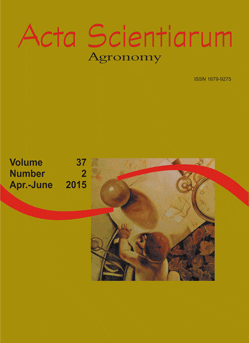<b>Hole diameters in pet bottles used for fruit fly capture
Abstract
Two experiments were conducted during the period from 31 January to 6 March 2012 in Santa Maria, Rio Grande do Sul State, Brazil to determine the efficiency of different hole diameters in PET trap bottles on pests in guava and persimmon orchards. In a randomised block design in a factorial scheme, we assessed the average number adults of Anastrepha fraterculus, Ceratitis capitata (Diptera: Tephitidae) and Zaprionus indianus (Diptera: Drosophilidae) infruits thatemerged in two situations (in the plant and on the soil); we also assessed the number of captured adults in trap bottlesunder two conditions, different hole diameters and different days after placement of the attractive solution. Smaller diameter sizescaptured more A. fraterculus, C. capitata and Z. indianusadults. The 1.0 cm diameter was the most efficient hole size in reducing the adult emergence of Tephritidae to Z. indianus, whereas the smallest diameter hole sizes, 0.6 and 0.8 cm, showed the highest efficiencies in controlling adult emergence in persimmon fruit and guava fruit.
Downloads
DECLARATION OF ORIGINALITY AND COPYRIGHTS
I Declare that current article is original and has not been submitted for publication, in part or in whole, to any other national or international journal.
The copyrights belong exclusively to the authors. Published content is licensed under Creative Commons Attribution 4.0 (CC BY 4.0) guidelines, which allows sharing (copy and distribution of the material in any medium or format) and adaptation (remix, transform, and build upon the material) for any purpose, even commercially, under the terms of attribution.




















































